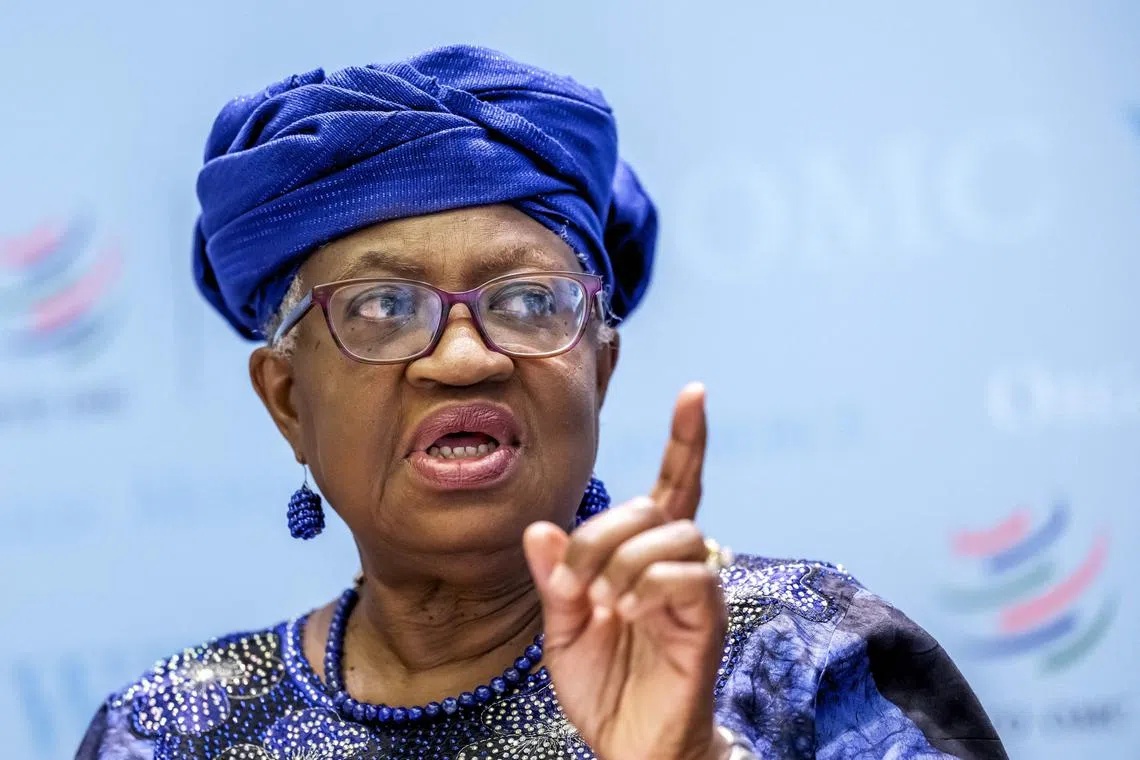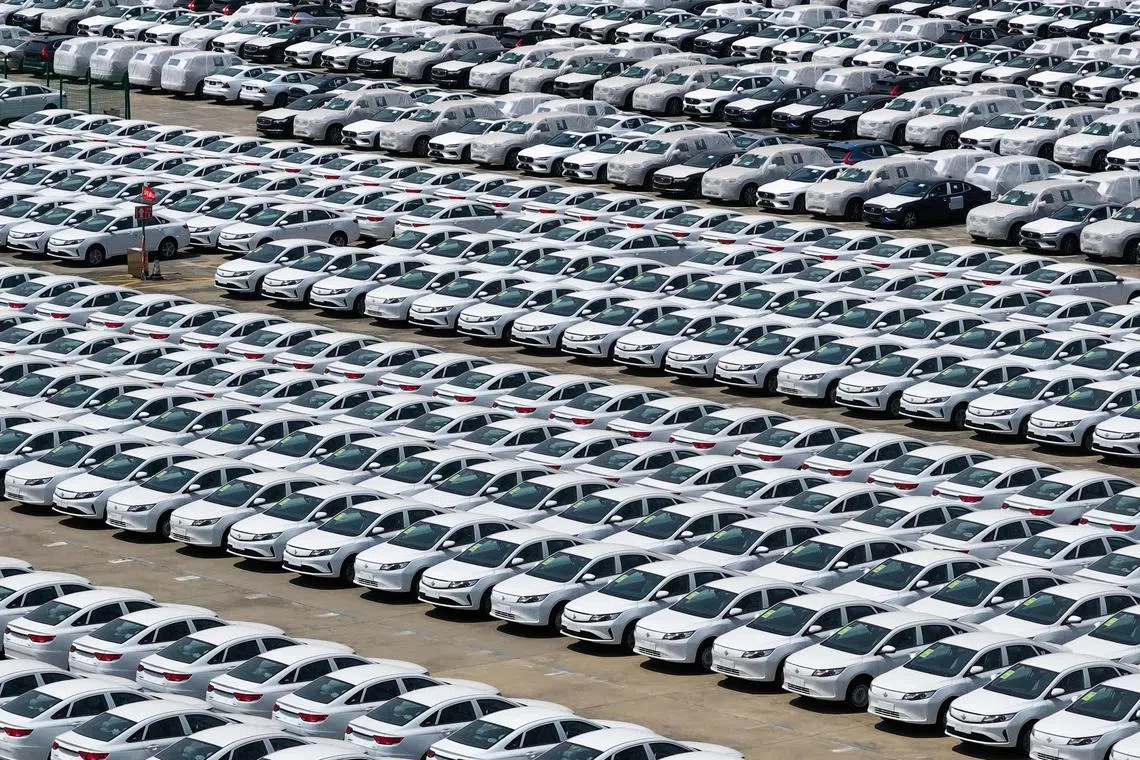WTO slashes 2025 trade growth forecast, warns of deeper slump
Sign up now: Get ST's newsletters delivered to your inbox

WTO chief Ngozi Okonjo-Iweala says the Trump tariffs could shrink world trade by as much as 1.5 per cent.
PHOTO: AFP
Follow topic:
GENEVA – Global trade is expected to plummet in 2025 in the wake of US President Donald Trump’s tariff offensive, fuelling uncertainty that threatens “severe negative consequences” for the world, the World Trade Organisation (WTO) warned on April 16.
Since returning to office, Mr Trump has imposed a 10 per cent tariff on imports of goods
While Mr Trump made a U-turn on steeper tariffs for dozens of countries, he has escalated a trade war with China, slapping 145 per cent levies retaliated with a 125 per cent duty
“I am deeply concerned by the uncertainty surrounding trade policy, including the US-China stand-off,” WTO chief Ngozi Okonjo-Iweala said in a statement.
“The recent de-escalation of tariff tensions has temporarily relieved some of the pressure on global trade,” she said.
“However, the enduring uncertainty threatens to act as a brake on global growth, with severe negative consequences for the world, the most vulnerable economies in particular.”
At the start of the year, the WTO expected to see global trade expand in 2025 and 2026, with merchandise trade seen growing in line with global GDP, and trade in services growing even faster.
But in the organisation’s annual global trade outlook published on April 16, it determined that, as things stand, world merchandise trade is on course to fall 0.2 per cent in 2025.
The number, calculated in line with the tariff situation on April 14, is already nearly three percentage points lower than what would have been expected without the tariffs Mr Trump has slapped on countries around the globe.
‘Severe downside risks’
The WTO warned that “severe downside risks” could see trade “shrink even further, to 1.5 per cent in 2025, if the situation deteriorates”.
The WTO also cautioned that services trade, while not directly subject to tariffs, was also “expected to be adversely affected”.
The global volume of commercial services trade was now forecast to grow by 4 per cent – around a percentage point less than expected.

The impact of the tariffs is expected to be felt quite differently in different regions, the WTO has said.
PHOTO: AFP
In 2025, the impact of the tariffs is expected to be felt quite differently in different regions, the WTO said.
“Under the current policy landscape, North America is expected to see a 12.6 per cent decline in exports and a 9.6 per cent drop in imports in 2025,” the organisation said.
“The region’s performance would subtract 1.7 percentage points from world merchandise trade growth in 2025, turning the overall figure negative,” it pointed out.
Asia, meanwhile, was projected to post “modest growth”, with both exports and imports set to swell by 1.6 per cent.
European exports were on track to grow by 1 per cent and imports by 1.9 per cent.
‘Decoupling’
Dr Okonjo-Iweala told reporters she was especially concerned about the “sharp projected decline in US-China bilateral trade”, currently expected to fall by 81 per cent
“This level of a drop in US-China trade of the magnitudes we are talking about, this virtually can amount to a decoupling of the two economies,” she said.
While US-China trade accounts for just around 3 per cent of world merchandise trade, she cautioned that their decoupling “could have far-reaching consequences”.
She voiced concern that it could “contribute to a broader fragmentation of the global economy along geopolitical lines into two isolated blocks”.
In that scenario, “our estimates suggest that global… GDP would be lowered by nearly seven per cent in the long term”, she said.
“This is quite significant and substantial.” AFP

